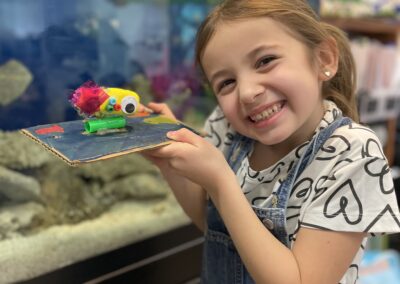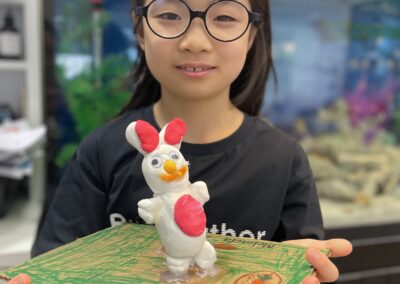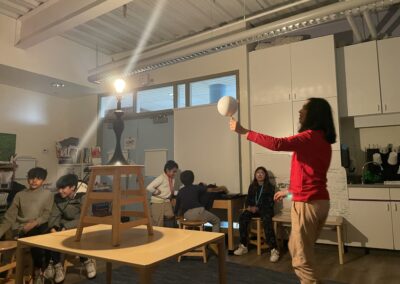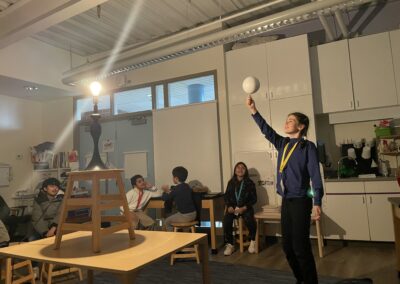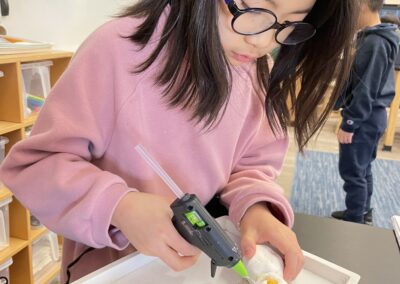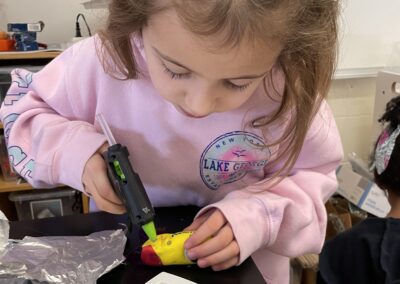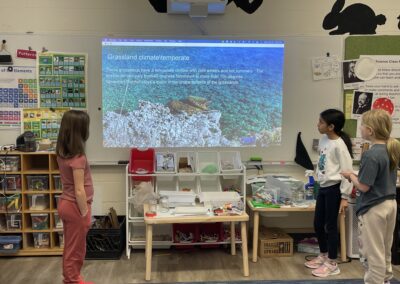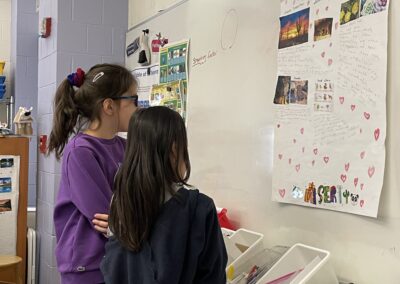We are thrilled to observe students entering the science classroom equipped with a substantial foundation of scientific knowledge. This prior knowledge catalyzes their classroom learning experiences, enabling them to actively contribute to discussions and focus on expanding their understanding of unfamiliar concepts—from teachers or peers. The learning objective of the STEM curriculum in the lower school goes beyond mere content acquisition; students also cultivate skills such as constructing models to demonstrate comprehension, conducting research, delivering clear and impactful presentations to audiences, grasping and effectively communicating the essence of scientific principles, and embracing diverse perspectives to approach problems. In this context, we will showcase some projects that 2nd to 5th graders have diligently worked on.
In second grade, following our exploration of animal adaptation and habitats, students engaged in a hands-on activity using various materials to construct an imaginary or real animal and its corresponding habitat. This project aimed to showcase their comprehension through a structured process: first, they developed a 2D design complete with labels indicating the materials they would utilize for different parts; next, they gathered the necessary materials, proceeded with construction, and concluded by presenting their creations. Through this activity, students demonstrated their understanding and artistic skills within the STEM framework, practiced using different tools, and enhanced their executive functioning abilities.
Third graders learned about Biomes. They were asked to collaborate in small groups of 2 to 3 members for the end-unit project. Armed with guiding questions to steer their research, they selected a biome to study. The students had the autonomy to choose their preferred presentation format, whether through Google Slides, posters, or even composing a song. During each group’s presentation, peers were encouraged to take notes, fostering an interactive learning environment. Discussions ensued on effective information presentation, mainly using tools like Google Slides with visuals, audio elements, and graphs to convey their findings succinctly and engagingly.
In the fourth grade, as we concluded our exploration of sound, we transitioned to delving into electric energy. Students encountered two primary challenges: first, using descriptive language to express their thinking and second, grasping scientific knowledge as an evolving understanding rather than a static body of facts. Over the past few weeks, we’ve engaged in activities and simulations related to static electricity. We have witnessed students progress from mere explanations like “It’s due to static electricity” or “I understand, but it’s hard to explain” to confidently constructing logical sentences to explain concepts.
Lastly, our fifth graders have been studying the Sun, Moon, and Earth. For their final project, students have been challenged to use Scratch to create animations to show their understanding of key concepts: 1) The moon phases, 2) The cycle of day and night, and 3) The mechanism behind different seasons. We are very excited to observe students’ diverse solutions and approaches to tackling this challenge. You’ll find pictured a selection of student projects to enjoy!

